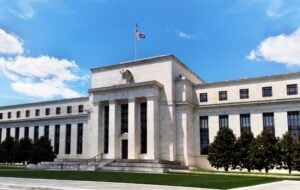
Inflation expectations are on the rise. At first sight, this change in expectations seems to be odd. The Federal Reserve has been increasing the supply of base money at a historical rate since 2008. In December 2020, base money was 6 times greater than it had been in December 2007. This is equivalent to a 14 percent annual growth rate. Despite this high growth rate in base money, however, no inflation occurred. Why, then, are inflation expectations increasing now?
Answering this question requires understanding how monetary policy works today and how Biden’s American Rescue Plan is to be executed. During the subprime crisis, the Federal Reserve started paying interest on reserves (IOR). In terms of how monetary policy works, the new policy was a game-changer.
Before the IOR policy, the Fed conducted monetary policy through open market operations. Specifically, it would create dollars, in the form of reserves, and use those dollars to purchase Treasury bonds from banks. The banks receiving the dollars in payment would channel the new liquidity to the market through different types of loans such as mortgages, business loans, and so on.
IOR means that banks can get paid to not lend money. Instead of extending loans to risky businesses, banks can just hold reserves at the Fed and receive a risk-free return. The Fed still creates money to purchase assets from banks, but the banks just leave those funds on deposit at the Fed. Because the new money does not get lent out, spent, and deposited, thereby supporting additional lending, it never drives up prices. There is no inflation. The base money supply grows at an incredible rate, while broad money aggregates, such as M2, remain more or less on course.
Biden’s American Rescue Plan is anything but modest. Expenditures totalling $1.9 trillion will be disbursed through various stimulus programs. The American Rescue Plan extends an increase in unemployment benefits, offers direct payments to individuals, and funds social programs, tax credits, and grants to small businesses, among other things.
There is a crucial difference between the American Rescue Plan and monetary policy. While the monetary policy traps funds via IOR, Biden’s fiscal policy provides funds directly to the market. Recipients of an individual direct deposit from Uncle Sam do not need to convince the bank to give them a loan; the amount is credited to their accounts, where it is ready to be spent (or saved) as the recipients see fit. The rise of expected inflation builds on the fear that the American Rescue Plan would be large enough to increase inflation because the funds are not trapped at the Fed.
There are at least two caveats to how much inflation may increase. First, the American Rescue Plan might drive up interest rates or expected future tax obligations and, in doing so, crowd out some private sector consumption and investment expenditures. To the extent that some of the stimulus plan is compensated by a fall in other types of spending, the inflation pressure is diminished. Second, one must be careful about the difference between nominal and real shocks. Reactivating the economy does not necessarily mean an increase in aggregate demand that will produce inflation. The corresponding increase in aggregate supply would put downward pressure on prices, thereby mitigating some or all of the effect of aggregate demand on inflation.
Bond markets are currently pricing in a little more than two percent inflation on average over the next ten years, which suggests inflation will pick up. So far, Fed officials seem willing to permit inflation to run a bit high over the next decade. Whether they will remain so permissive when the inflation numbers start rolling in––or, ratchet up IOR to bring inflation down to two percent––remains to be seen.




